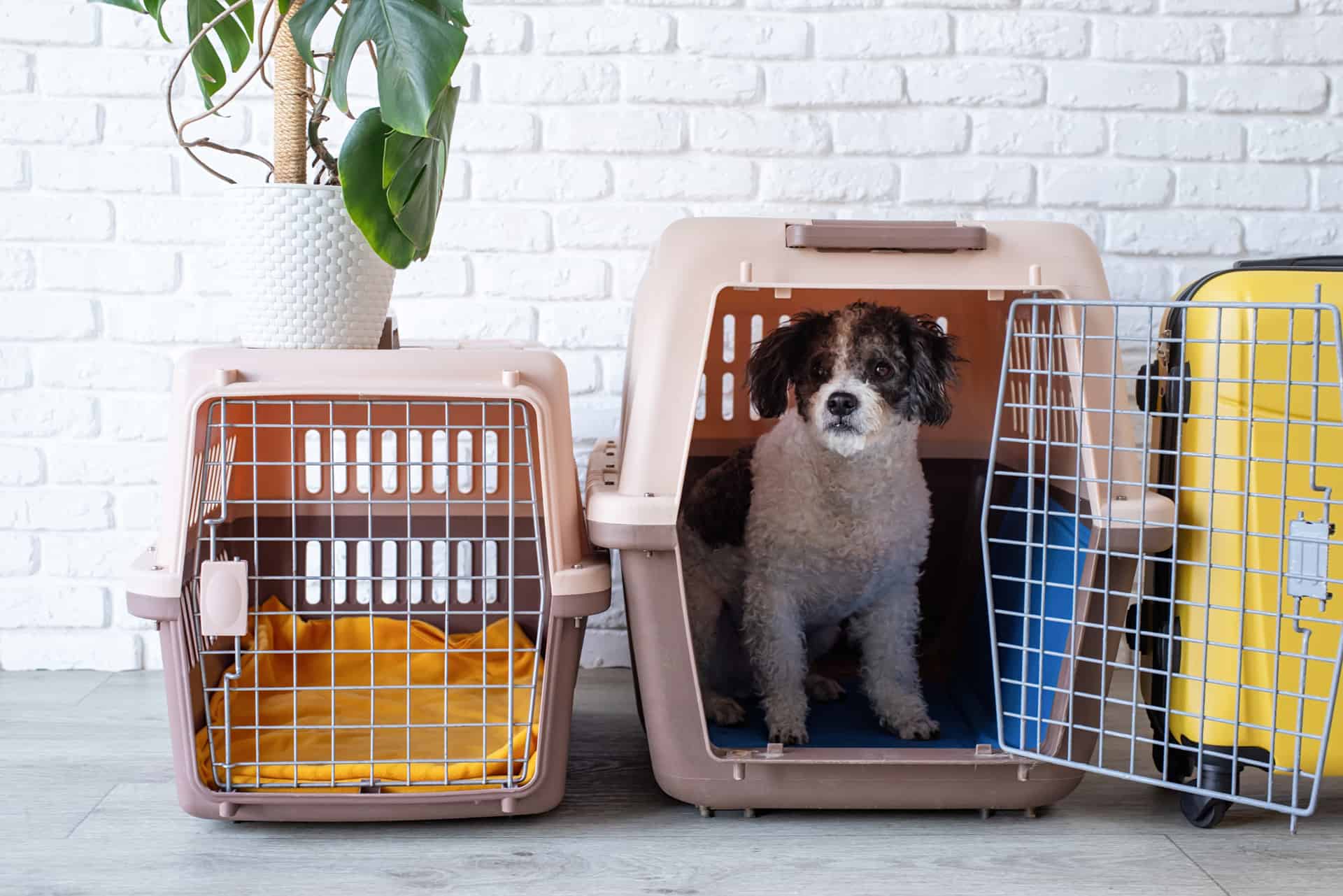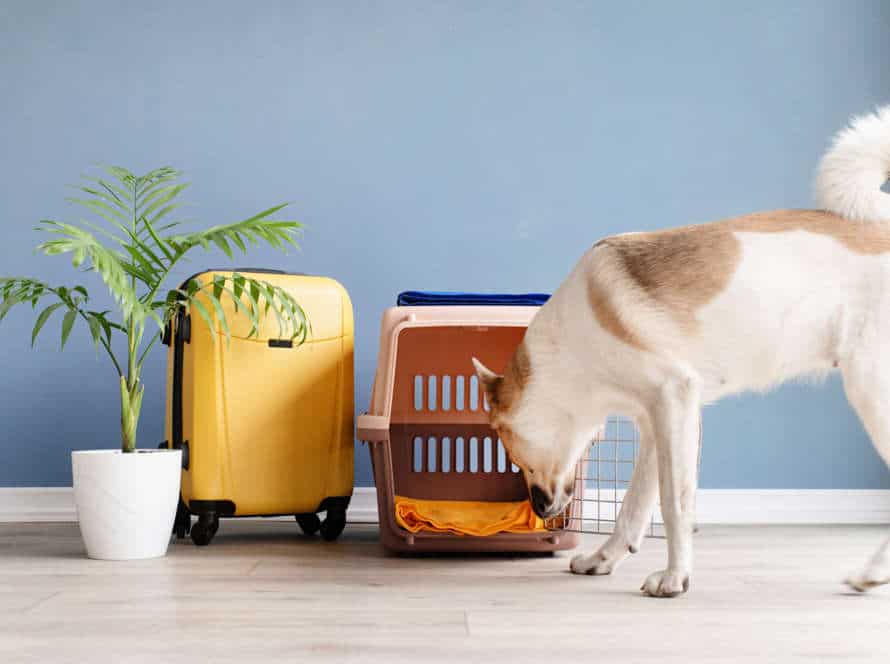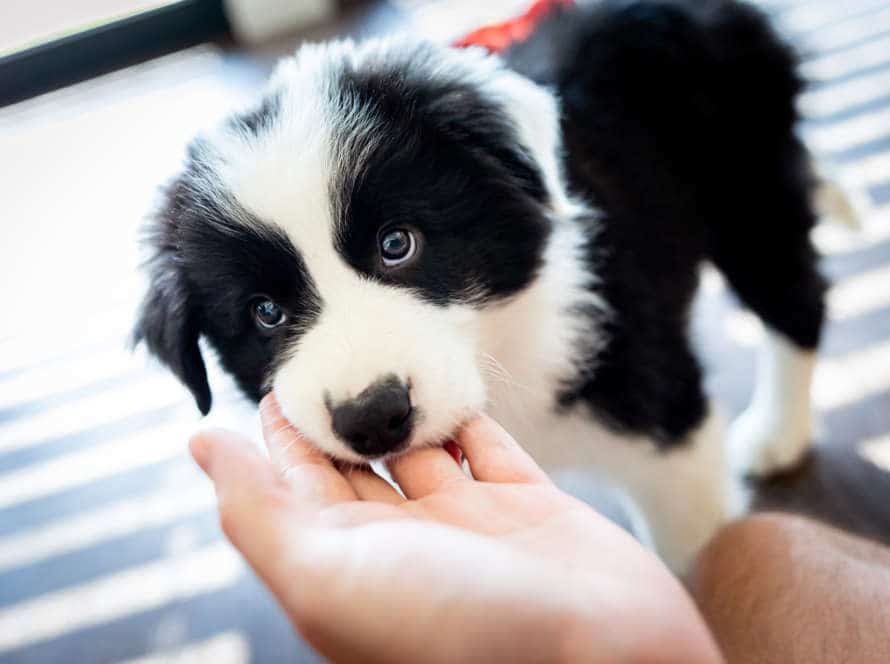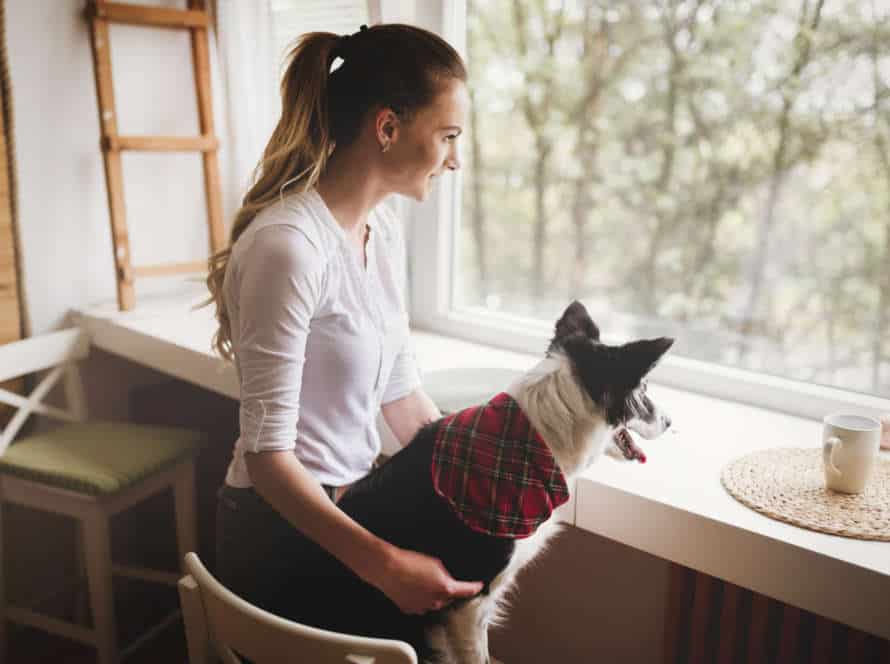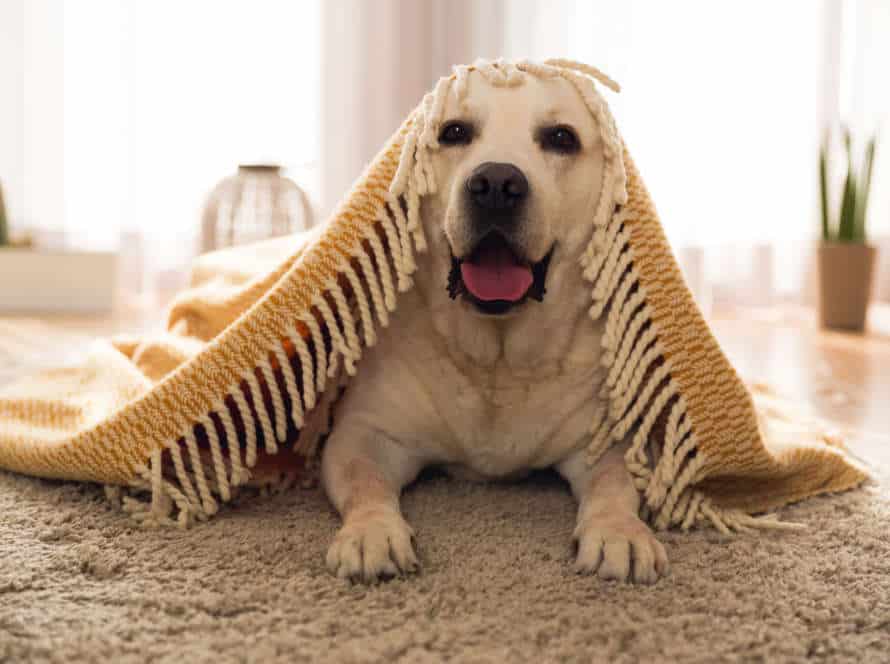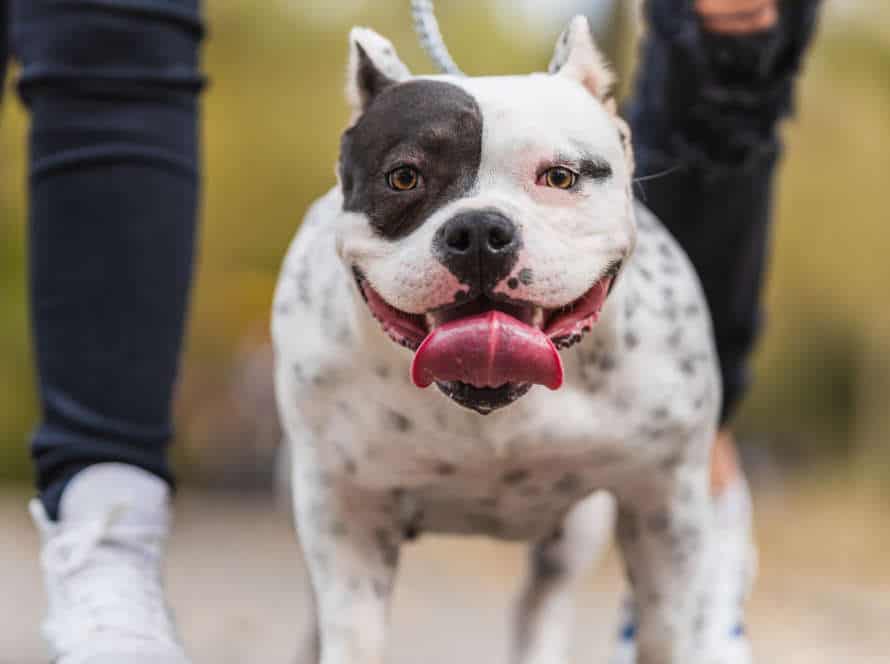How to Prevent Separation Anxiety During Nighttime Crate Training
Crate training can help prevent your pup’s separation anxiety. But, nighttime can be tough. Here are five tips to make nighttime crate training a breeze:
- Introduce the crate during the day – make it a positive experience.
- Add a cozy blanket or bedding to the crate.
- Provide lots of exercise and stimulation during the day.
- Calmly lead your pup to the crate at bedtime. No treats or attention.
- Try a calming aid like lavender oil or supplement.
With patience and consistency, your pup will learn to love their crate and feel relaxed being alone at night.
Understanding Separation Anxiety in Dogs
Dogs can suffer from separation anxiety. It happens when they’re away too long from their owners. Causes vary, from genetics to environment. The way to conquer nighttime crate training is to figure out the source of the anxiety and have a plan ready. This helps reduce the anxiety.
Causes of separation anxiety
Dogs can suffer from separation anxiety due to several causes. These include: lack of socialization, a past of being abandoned/rehomed, and changes in routine. Furthermore, trauma, abuse, genetics, over-attachment, and medical conditions can all lead to it too.
To avoid this at night, gradually introduce your pup to the crate, make it seem positive, and be calm when you go and come back. If needed, ask a vet or dog trainer for assistance.
How to identify separation anxiety in dogs
Is your dog anxious when you leave the house? Does it bark, drool, or chew furniture? These could be signs of separation anxiety. Knowing the symptoms can help you address the issue.
If your pup:
- Follows you around the house
- Gets upset when you leave
- Has destructive behaviour
- Has signs of anxiety (panting, whining, drooling)
It may have separation anxiety. To prevent it during crate training, do these things:
- Increase crate time gradually
- Don’t give lots of attention in the morning
- Use calming aids like music, toys, or scents
Ignoring separation anxiety can harm your dog. Give it care and attention to keep it happy and healthy when you’re away!
Introduction to Crate Training
Crate train your pet! It’s a great way to start good habits and form a strong bond. It can also help with separation anxiety. Know the basics before you begin. Introduce the crate and be prepared for nighttime training.
Benefits of crate training
Crate training has many advantages for your furry pal, especially during night time. It gives them a secure spot, a familiar feeling, and a regular routine.
Firstly, the crate is their private place to go for some calm. Dogs love security and having a refuge is something they need.
Secondly, crate training can help with housebreaking by setting rules for your pup. It teaches them when and where it is ok to go potty.
Thirdly, crate training at night prevents separation anxiety. It helps them become used to sleeping alone and makes it easier for everyone.
Pro tip: To start crate training, reward your pup with treats when they go in the crate. This will help them connect the crate to good experiences.
Types of crates and which one to use for crate training
Crate training is great for preventing separation anxiety in pooches. Picking the correct crate is necessary for a successful training experience. Here are the most common crates and which one to use for crate training:
- Wire crates: Made of steel wiring, with good ventilation. They let dogs observe their environment and provide flexibility in size. Wire crates are ideal for crate training as they give your pup good airflow and visibility.
- Plastic crates: Constructed with durable plastics and portable, great for travel. Plastic crates are suitable if you need to transport your pup or for house training.
- Soft-sided crates: Fabric made and lightweight, perfect for small and well-behaved dogs. Soft-sided crates may be good, if you want portability. However, it’s not recommended for destructive pups.
- Heavy-duty crates: Made with strong materials like steel, mainly for aggressive or rambunctious dogs. Heavy-duty crates might be the right choice if your pup is prone to chewing, digging or scratching.
Choosing the right crate will make your pup content and less anxious, helping nighttime crate training.
How to introduce your dog to the crate
Introducing your pup to their crate can be a gradual and positive experience. To avoid separation anxiety, here are some easy steps:
- Place the crate in a main spot in your home and let your pup explore it.
- Put toys and treats inside to entice them.
- When they feel comfy going in and out, start feeding them in the crate.
- Increase the time they stay in the crate, beginning with a few minutes.
- Be present in the room while they’re in the crate at night. Then, slowly move away until they’re okay being in the crate overnight.
Patience and positive reinforcement will help prevent separation anxiety and give them a secure spot to rest.
Tips for Nighttime Crate Training
Crate training your pup at night can give them a secure and cozy place to sleep. It can boost their independence. But, if the pup isn’t trained well, it can lead to separation anxiety. Here are a few tips to stop this issue when crate training your pup at night:
Start crate training during the day
Crate training can help to avoid separation anxiety and keep your pup safe at night. It’s vital to start during the day. Here are some tips:
- Set up a regular evening ritual. Take them outside to go potty before bed, and give them a cozy blanket and toy in the crate.
- Use positive reinforcement. Give treats and verbal praise each time they enter the crate, and stay calm all night.
- Increase the time spent in the crate bit by bit, until they can sleep without whining or scratching.
These tips should be used during the day and then moved to night. This should help your pup feel secure and decrease the chance of separation anxiety.
Tire out your dog before bedtime
Before bedtime, it’s essential to tire out your pup. This helps avoid separation anxiety and encourages a restful sleep during crate training. Here are some useful techniques:
- Up the physical activity. Run, play fetch, or go for a long walk with your dog before crating them.
- Give them mental stimulation. Puzzles, interactive toys, and training exercises that challenge your pup mentally can be great.
- Follow a feeding routine. Give your pup their food earlier in the evening. Then take them on a potty break before bed.
In addition, make their crate comfortable – provide a bed, some toys, and turn off the lights.
Keep a routine and schedule
To ensure success in nighttime crate training your pup, it’s important to establish a consistent routine. Here are a few tips:
- Set a bedtime and stick to it.
- Take pup outside for one final potty break before tucking them in.
- Put comfortable bedding and a few safe toys in the crate.
- No feeding or watering close to bedtime – it could lead to accidents!
- Keep crate in a dark, quiet room for restful sleep.
- During day, gradually increase amount of time pup spends in crate – it’ll make them feel more comfy and less anxious.
Remember to reward pup with treats and positive reinforcement for good behavior during crate training.
Use a familiar blanket or item
Nighttime crate training your pup? Make their environment comfy! Use a familiar blanket or item in the crate. It’s effective!
It can provide comfort and a sense of security. The smell of the item will be familiar, easing anxiety. This can make the process smoother for both you and pup.
When choosing, make sure it’s safe and appropriate. Easy to clean, and nothing they can chew or swallow.
Pro Tip: To reduce separation anxiety, put the crate near your sleeping area, or leave a piece of your clothing with your scent near the crate.
Avoid giving attention when your dog whines
It may seem strange, but ignoring your pup’s whines is a great way to stop nighttime crate training worries. When canines whine, they want recognition. Giving in means you’re reinforcing the behavior and it will be harder to break. Try this instead:
- Be consistent and patient – stick to your nightly routine and don’t react to the whining.
- Offer a relaxing and secure place in the crate with their favorite toys, snacks, and bedding.
- Train them with short, increasing intervals in the crate so they get used to it.
- Remember to reward them with compliments and treats when they show good crate behavior. This way, they’ll know they’ll only get attention and rewards if they stay quiet and calm.
With time and patience, you can help your pup beat separation anxiety and be content and happy in their crate.
Dealing with Separation Anxiety
Separation anxiety can be a challenge for pup’s crate training. It’s hard for them to stay alone in the new crate at night. Luckily, there are some steps to help your pup adjust. What are they?
To help your dog manage anxiety:
- Give them something comforting, like a toy or blanket.
- When you leave, do not make a big deal out of it.
- Make sure they get enough exercise during the day.
- Spend time with them before leaving.
- Give them treats when you come home.
Gradual training for extended periods of time
Gradual training over longer periods is a great way to stop separation anxiety when crate training your furry friend at night. Here are some tips to remember:
- Begin the crate training during the day while you’re at home. Encourage your pet to enter and offer treats and compliments when they do.
- Increase the time your pet spends in the crate in the day, starting with a few minutes and building up to longer periods.
- Provide bedding, water, and toys for the crate to make it a comfy and secure place for your pet.
- Be consistent and patient with training. Reward your pet with treats and compliments when they exhibit good behavior.
- Lastly, before nighttime crate training, make sure your pet is physically and mentally tired, so they’ll be more likely to sleep through the night without getting anxious.
Don’t make a big deal when leaving or returning
Make no big fuss when leaving or returning. Dogs notice cues and too much affection can make them anxious. Here are tips to help prevent nighttime separation anxiety:
- Be quiet when leaving/returning and don’t give your dog too much attention.
- Slowly increase the time that you are away, so your pup gets used to being alone in the crate.
- Give them a safe, comfortable and familiar place to rest while in the crate.
By following these tips, nighttime crate training can be stress-free and a positive experience for your furry friend.
Manage anxiety with calming aids
Calming aids can be handy for controlling separation anxiety in doggies during nighttime crate training. Here are a few that may help:
- Adaptil Diffusers and Collars: Adaptil is a man-made version of the pheromone mom dogs let out to soothe their puppies. Putting an Adaptil diffuser or collar in the sleeping room can make your pup feel safer and more relaxed.
- CBD Oil: Studies suggest CBD oil can help dogs with anxiety. Ask your vet for advice on dosage and brand.
- Music: Play calming music for your pup to mask outside noises and create a soothing environment for sleep.
- ThunderShirt: The ThunderShirt is a vest that offers mild and continuous pressure on doggies, which has a calming effect on their nervous system.
Using these calming aids along with proper crate training techniques may help stop separation anxiety in dogs during nighttime.
Consult with a professional trainer or behaviorist
Working with an experienced trainer or behaviorist is a wise choice when addressing separation anxiety and stopping it during nighttime crate training. These pros can give you valuable advice and realistic remedies to reduce your pet’s tension and instruct them in healthy behaviors.
To work with a pro to prevent separation anxiety, use these hints:
- Create a regular routine – put together a regular bedtime regimen and stick to it every night.
- Crate train – let your pet get used to their crate over time. Avoid bad associations with the crate and keep it in the room your pet spends most of their time in.
- Positive reinforcement – reward your pet with treats or toys when they do well in the crate.
- Exercise – exercise your pet regularly before bed to tire them out.
Use the above tips with consulting a specialist to keep your pet from having separation anxiety.
Tip: Don’t punish your pet when they are anxious, as it might worsen their symptoms over time.
Troubleshooting Crate Training Problems
Crate training a pup or dog can cause anxiety. To prevent this, we need a safe and secure environment around the crate. When you’re out, the pup can peacefully spend time there. We’ll discuss common issues related to crate training and how to solve them.
Barking and whining issues
Barking and whining can be signs of separation anxiety in pets. This is a problem for dogs when left alone at night. To help avoid this during crate training, here are some tips:
- Start slow. Introduce the crate to your dog by putting treats inside, and let them explore the space.
- Make it comfy. Put your pup’s favorite toys or blankets inside the crate.
- Positive reinforcement. Reward your pup with treats and praise when they enter the crate or are quiet inside.
- Set a routine. Have consistent crate training sessions and stick to it.
If your pup still barks or whines too much, talk to a vet or trainer to figure out the cause and develop a plan.
Chewing and destructive behavior while in the crate
If your pup is gnawing or misbehaving while in the crate, it could be a sign of separation anxiety. Stopping this anxiety during nighttime crate training is essential for your dog’s mental health and your peace of mind.
Here are some tips:
- Start crate training slowly, letting your pup get used to the crate.
- Put the crate in a calm and familiar spot, such as your bedroom or living room.
- Cover the crate with a blanket to make it dark and welcoming.
- Give your pup a chew toy or a treat to keep them busy.
- Practice leaving your dog in the crate for a little while, then gradually increase the time.
Keep in mind, your doggy’s comfort and safety are important, and with patience and effort, you can stop separation anxiety and destructive behavior during nighttime crate training.
Crazy tip: Place a piece of clothing with your scent on it in the crate with your pup. The familiar smell can help them relax and feel safe.
Potty accidents in the crate
Potty mishaps in crates are a common problem with nighttime crate training. This can lead to doggies having separation anxiety. Here are some tips for avoiding potty accidents, and lessening separation stress:
- Before bed, reduce food and water intake, so the pup won’t need to go overnight.
- Before crating, give your dog time to go to the bathroom.
- Choose an appropriate crate size – not too big, not too small.
- Use positive reinforcement: treats, toys and praise, to create a positive connection with the crate, and reduce anxiety.
- Slowly increase the time your dog spends in the crate, to help them adjust to being alone.
Pro tip: If the issue continues, consult a professional dog trainer or vet to check for any medical conditions or behavioural issues.
Conclusion and Recap of Main Points
To sum up, crate training at night can be tough for both humans and their furry friends. To make it go smoother, there are numerous actions you can take.
To remind us of the key points:
- Introduce your pup to the crate during the day and get them used to it little by little.
- Make the crate comfy with a soft bed and some favorite toys.
- Associate it with something positive by offering treats and praise when they enter the crate willingly.
- Increase the amount of time they spend in the crate gradually and ignore any whining or barking.
- Set up a regular bedtime routine to give your pup a sense of security and serenity.
By following these steps, you can help your pup feel safe and content while they are in their crate at night and avoid any separation anxiety.
Frequently Asked Questions
1. What is separation anxiety in dogs?
Separation anxiety is a disorder that occurs when a dog experiences extreme stress or panic when they are left alone or separated from their owner or caregiver.
2. How can I prevent separation anxiety during nighttime crate training?
One way to prevent separation anxiety during nighttime crate training is to gradually acclimate your dog to the crate by starting with short periods of time and gradually increasing the length of time they spend in the crate.
3. Should I leave my dog with toys or treats in the crate at night?
It is generally recommended to avoid leaving toys or treats in the crate at night as these may distract your dog from sleeping and could potentially cause choking hazards.
4. What should I do if my dog shows signs of distress or anxiety when in the crate at night?
If your dog shows signs of distress or anxiety when in the crate at night, it is important to address their needs and try to identify the cause of their discomfort. Consider consulting with a veterinarian or professional dog trainer for advice.
5. Can crate training cause separation anxiety in dogs?
Crate training, when done correctly, should not cause separation anxiety in dogs. In fact, many dogs find comfort and security in having a designated space of their own.
6. How long does it usually take for a dog to become comfortable with crate training at night?
The amount of time it takes for a dog to become comfortable with crate training at night can vary depending on the individual dog and their temperament. It may take anywhere from a few days to several weeks or even longer for your dog to fully acclimate to the crate.

